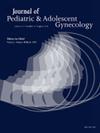Availability of Inpatient Sexual and Reproductive Health Services at U.S. Children’s Hospitals
IF 1.8
4区 医学
Q3 OBSTETRICS & GYNECOLOGY
引用次数: 0
Abstract
Objective
To understand the scope of sexual and reproductive health (SRH) services provided to adolescents assigned female at birth in pediatric hospitals in the United States.
Methods
Data were collected via an electronic survey of inpatient clinical leaders at freestanding and nested children’s hospitals in the United States. Survey domains included availability of trained clinicians, equipment to perform pelvic exams, contraceptive methods offered, and facilitators and barriers in providing SRH services. Descriptive statistics were used for analysis.
Results
Of 160 invited hospitals, 52 (33%) responded with 25 (48%) surveys completed by Pediatric Hospital Medicine and 23 (44%) Adolescent Medicine specialists. Twenty-two (42%) worked in free-standing and 30 (58%) in nested children’s hospitals with 42 (81%) reporting academic- or university-affiliations. Only 3 (6%) reported having the equipment needed to perform pelvic exams on the inpatient unit. Eleven (21%) reported providing some form of long-acting reversible contraception, of which all provided implants; only 5 (10%) institutions offered intrauterine device insertion. A common facilitator was having clinicians with required skills (65%) and a common barrier was SRH not being considered an inpatient problem (83%).
Conclusion
While clinicians identify SRH services at children’s hospitals as important, many lack the basic equipment needed and institutional support to provide comprehensive SRH care. This study suggests that the integration of clinicians appropriately trained in SRH care may be one of the greatest facilitators to providing inpatient SRH care in children’s hospitals.
美国儿童医院住院病人性与生殖健康服务的可用性
目的:了解美国儿科医院为出生时被指定为女性的青少年提供的性健康和生殖健康(SRH)服务的范围。方法:通过对美国独立式和巢式儿童医院住院临床负责人的电子调查收集数据。调查领域包括训练有素的临床医生的可用性,进行盆腔检查的设备,提供的避孕方法,以及提供性健康生殖健康服务的促进因素和障碍。采用描述性统计进行分析。结果:160家受邀医院中,52家(33%)回应了25家(48%)儿科医院医学专家和23家(44%)青少年医学专家完成的调查。22名(42%)在独立儿童医院工作,30名(58%)在嵌套儿童医院工作,42名(81%)报告与学术或大学有联系。只有3(6%)报告拥有在住院病房进行盆腔检查所需的设备。11家(21%)报告提供某种形式的长效可逆避孕措施,这些机构均提供植入物;仅有5家(10%)机构提供宫内节育器置入服务。一个常见的促进因素是拥有具备所需技能的临床医生(65%),一个常见的障碍是性生殖健康不被视为住院病人的问题(83%)。结论:虽然临床医生认为儿童医院的性健康和生殖健康服务很重要,但许多医院缺乏提供全面性健康和生殖健康护理所需的基本设备和机构支持。本研究提示,整合经过适当性生殖健康护理培训的临床医生可能是儿童医院提供住院性生殖健康护理的最大促进因素之一。
本文章由计算机程序翻译,如有差异,请以英文原文为准。
求助全文
约1分钟内获得全文
求助全文
来源期刊
CiteScore
3.90
自引率
11.10%
发文量
251
审稿时长
57 days
期刊介绍:
Journal of Pediatric and Adolescent Gynecology includes all aspects of clinical and basic science research in pediatric and adolescent gynecology. The Journal draws on expertise from a variety of disciplines including pediatrics, obstetrics and gynecology, reproduction and gynecology, reproductive and pediatric endocrinology, genetics, and molecular biology.
The Journal of Pediatric and Adolescent Gynecology features original studies, review articles, book and literature reviews, letters to the editor, and communications in brief. It is an essential resource for the libraries of OB/GYN specialists, as well as pediatricians and primary care physicians.

 求助内容:
求助内容: 应助结果提醒方式:
应助结果提醒方式:


